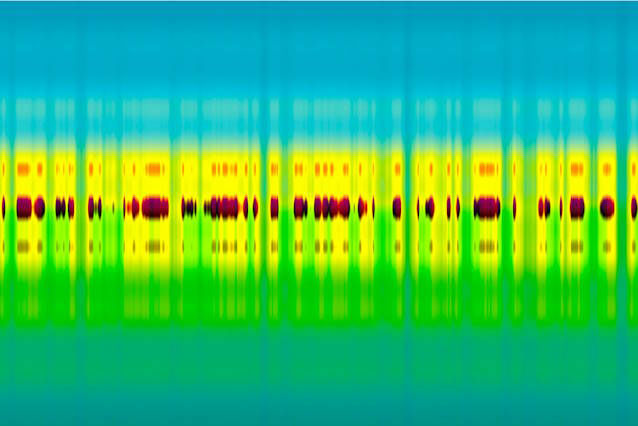6-minute read. // (Photograph: MEHAU KULYK/Getty Images)
In a future when gene therapy can tweak a person’s genome precisely enough to cure them of severe disease, treating earlier will often be better—and the womb is as early as it gets. Last week, at the annual meeting of the American Society of Gene & Cell Therapy in Los Angeles, a handful of researchers presented their progress on in utero gene therapy, showing that research in lab animals offers some hope for human treatments, but still faces significant hurdles.
Doctors can already detect abnormalities in the DNA of a developing human fetus. Conditions like sickle cell anemia and spinal muscular atrophy arise with genetic signatures—sometimes as simple as a single gene mutation—that appear in prenatal screens. New gene therapies can treat adults and even kids with these conditions, but they have some drawbacks: They can cost millions of dollars for a one-time dose, and many are currently only available to clinical trial participants. Most of all, by the time a person receives them, they may have already spent months, if not many years, living with a serious illness.
Physicians and scientists hope that by correcting these abnormalities before birth, a newborn will stand a better chance of a healthy life. “The main advantage of administering these therapies in the womb or before birth would be to prevent disease before it happens,” says Bill Peranteau, a pediatric and fetal surgeon with the Children's Hospital of Philadelphia, whose team presented at the conference.
His team has studied many diseases, including cystic fibrosis and metabolic disorders. Others at the conference presented research into conditions that affect the liver, muscles, brain, or spinal cord. Overall, these teams tend to focus on severe diseases that can benefit from early treatment. For some conditions, Peranteau says, “if you wait until after birth—or a long time after birth—you'll miss a window of opportunity to prevent irreversible pathology.”
Fetal development offers that window, because at that point the fetus has many unspecialized stem cells that will give rise to all kinds of bodily tissues. A fetus’ immune system hasn’t fully matured, so it’s less likely to reject a biological therapy than an infant’s immune system would. And it is small, meaning its dose of a complex, expensive drug can be small too.
A gene therapy “drug” is not a drug in the traditional sense; it’s not a chemical compound that kills invading germs or quells disease symptoms. Intead, it is often a DNA-editing tool, such as Crispr, packaged into a sort of delivery vehicle, usually a virus or nanoparticle, that carries it to the target cells. The therapy can then snip, swap, or insert genes to reverse or mitigate disease.
“Delivery is still a very large challenge,” says Rohan Palanki, a bioengineer and MD/PhD student who works with Peranteau, because it can be hard to target cells in organs like the brain, lungs, and skin. The best way to solve the delivery problem depends on the disease and the type of gene therapy. Researchers may optimize the microscopic vehicle that delivers the genetic machinery, inject the drug into a specific region or at a specific time in the pregnancy—or all the above.
Among other conditions, Peranteau’s team studies skin disorders that begin during pregnancy, such as epidermolysis bullosa, a rare condition in which skin tears and blisters easily. A person’s skin fully forms a protective layer of keratin by 26 weeks in utero, and that barrier makes it harder for a genetic drug to reach the right stem cells in the skin. Gene editing before that point may be ideal. At the conference, the team presented results that confirm this hypothesis in mouse studies: Gene edits were more successful when delivered early by injecting genetic instructions—in this case, mRNA encased in lipid nanoparticles—into the amniotic sac. (The proof-of-concept wasn’t meant to cure the disease, but rather show that one could better target the right cells this way.)
Separately, Palanki presented results of a project to design lipid nanoparticles for delivering gene therapy to treat congenital brain disease. Reaching the brain is difficult, in part because nanoparticles tend to accumulate in the liver and spleen, rather than making their way to the desired organ. So Palanki engineered a nanoparticle that worked: The genetic material made it into lab cultures of human neurons, as well as the brains of newborn and fetal mice. The genetic material had a 17-fold stronger effect when delivered by the new nanoparticles, compared to an industry standard approved by the US Food and Drug Administration. Working with researchers in Singapore, Palanki recorded the same success in the fetuses of rhesus macaques.
Though the work is again a proof-of-principle for delivery in utero, sending nanoparticles to the brain is a big step. Neurodevelopmental diseases often fit the bill of diseases that set in before birth and are hard to reverse afterward. “Diseases like that would be prime targets for a prenatal therapy,” Peranteau says.
Other congenital diseases, such the metabolic disorder Hurler syndrome—which causes neurodegeneration, enlarged liver and spleen, and scoliosis—occur across many organs, so the delivery challenge is to ensure widespread distribution. At the conference, a team from Yale shared results in studies of monkeys showing that biodegradable plastic-like nanoparticles will distribute into parts of the body, such as the kidney, that more conventional alternatives don’t. And their collaborators at UC Davis and the California National Primate Center have begun using total-body PET scans (which reveal cellular activity) to monitor where in the body genes get edited.
Together, the projects highlight how important it is to monitor where the genetic machinery reaches—and its effect once it arrives. “Total-body PET has this unrivaled sensitivity,” says UC Davis translational researcher Alice Tarantal, who presented the work. It’s one of the first preclinical studies to show that such noninvasive, three-dimensional scans can quantify gene edits in a live animal. “We can image much faster, because we can image the whole body at once,” she says.
Safety is a top priority when analyzing where a gene therapy gets delivered—to make sure it’s going to the right organ, and to the child, not the parent. “Not only are we intervening with the fetus, but we're also intervening with the second patient, the childbearer as well,” Palanki says. “It makes delivery safety incredibly important.”
Currently, very few heritable diseases have gene therapies that have been approved by the FDA. One therapy, called Zolgensma, treats spinal muscular atrophy in newborns and children up to age 2. But halting the disease in childhood may still be too late to avoid lifelong health issues. “When the baby is born, in the most severe forms of the disease, the neurons that are affected in this disease are already sick,” says Beltrán Borges, a postdoctoral researcher of pediatric surgery at UC San Francisco. “We were wondering: If we intervene earlier, can we perhaps prevent that disease from happening—and have the kid have a normal life?”
In 2019, Turkish researchers published evidence that in utero gene editing for this disorder could work in mice. “We wanted to take this one step further and take it to sheep,” which are well-studied test subjects for the disease, Borges says.
Borges examined where the gene editing machinery would go if injected through either the umbilical vein or directly into the cranium. Umbilical injections are less direct, but far more accessible. His team tested the two routes by injecting a benign virus carrying genetic instructions that would make the recipient cells glow green, indicating where they had landed.
According to preliminary results Borges shared at the conference, the instructions sent by umbilical injections went where he hoped, like the brain, spinal cord, and muscle cells. But there was a catch: They also went where they shouldn’t. Borges reported a small number of locations where genetic material entered female fetal lambs’ egg cells. “Those should never be touched,” Borges says.“That's kind of like a big red line that is seen in the field and everybody respects.” It’s essential to avoid doing anything that might enable the editing of reproductive, or “germline,” cells, because those DNA changes could be passed down to the next generation. Gene replacement therapies, including this experiment, don’t edit an individual’s genome, and should not be heritable.
Borges is still working out why this happened in just eggs and not sperm, and what could prevent it. But the ongoing work highlights the caution with which researchers are proceeding. One of the other big challenges researchers are anticipating is immune response. Many people have antibodies for the Cas9 protein that Crispr uses to cut DNA, which means that their bodies may reject the therapy altogether.
A pair of presentations about in utero gene therapy in mice highlighted the role immunity can play in determining if a therapy will work. For example, one set of results investigating a long-term cure for tyrosinemia, a genetic liver disease, showed that the gene therapy kept working in the fetus even when the mother was immune to the Cas9 editing machinery. But in a different presentation, the same researcher found that maternal immunity does foil in utero gene therapy in other cases: When pregnant mice had immunity to the AAV9 virus often used to deliver gene therapy, more of their fetal offspring died due to the maternal immune response. One possible workaround researchers are considering for future tests in humans: Whether injecting the therapy directly into the umbilical cord early in pregnancy may safeguard the fetus from the mother’s immune response.
It’s still very early days for gene therapy in the womb, and Peranteau stresses that so far most of the work has been done in mice and nonhuman primates. It’s going to take a while to surmount the challenges posed by drug delivery, immune rejection, and the risk of germline edits. Then more research will be needed to ensure the safety of both fetus and parent, and to test whether the benefits of the therapy last long after treatment. “It is all very proof-of-concept,” he says, estimating that the first human in utero trials are probably still 5 to 10 years away. So while these conference presentations offer some hope, he says, “the most important thing is to not give false hope.”











